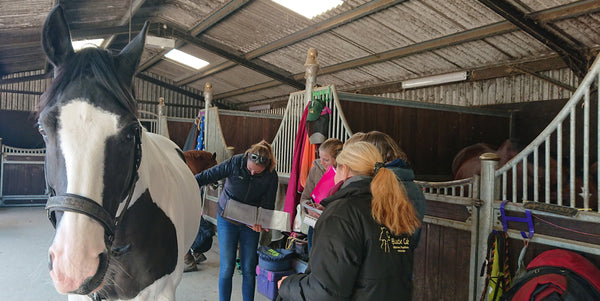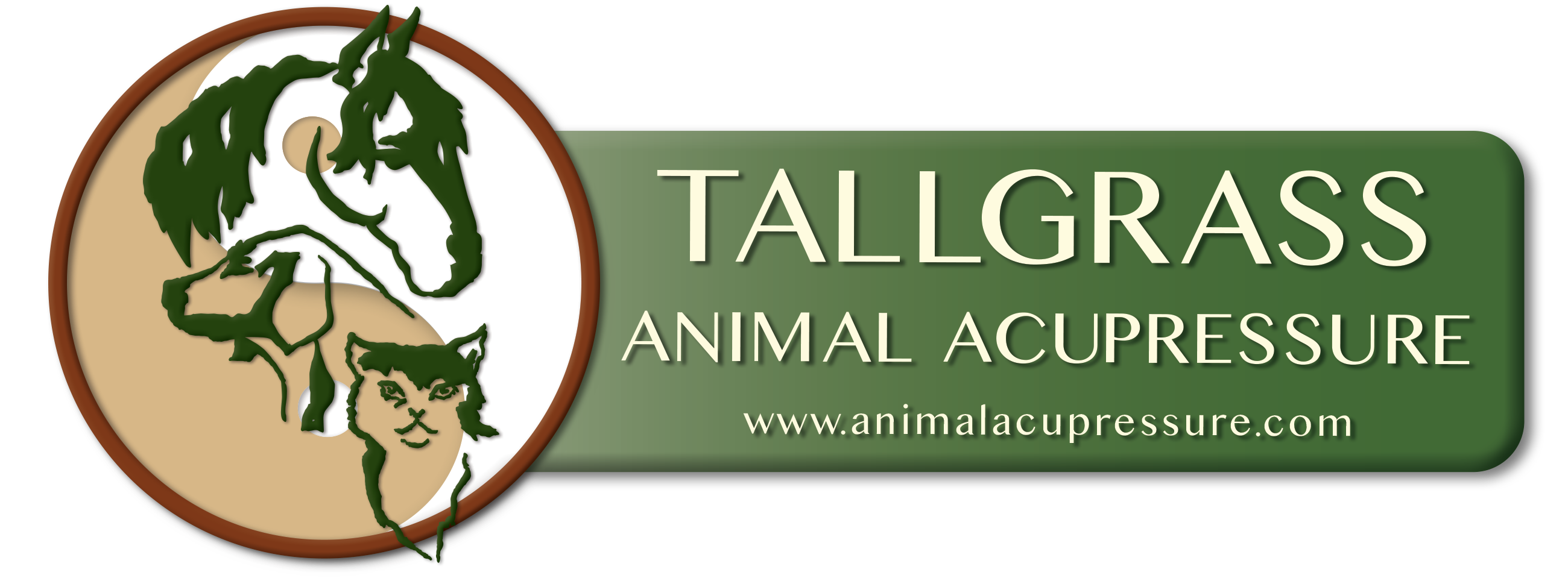
What's the Point
By: Amy Snow and Nancy Zidonis, Tallgrass Animal Acupressure Institute.
Acupressure points, usually called “acupoints” in Chinese medicine, are identified in many ways. There are local points, adjacent points, distal points, chain points, encircling points, and single points, to mention a few. Each application has a different therapeutic value. The point is in how we use them!
Local Points
A local point is an acupoint that’s located near where the issue is exhibiting. If the animal is having a sinus issue, using two points such as Stomach 2 and Large Intestine 20, will to help relieve sinus pressure because they are located next to the sinuses. Another example of local points: if the horse or dog has a shoulder problem, working with Triple Heater 14 and Large Intestine 15 will bring more chi and blood to the shoulder; these two points are located on the shoulder.
Adjacent Points
The adjacent points are not directly in the issue area but are near it. These points are in the general area of the problem. For instance, when the animal has a dental issue, stimulating Triple Heater 17, located on the temporomandibular joint, can help reduce dental swelling and pain. Gall Bladder 21, located just in front of the scapula, can serve as an adjacent acupoint for resolving a stiff neck.
Distal Points
A distal point is a point that has the energetics and function affecting the problem area but is a distance from the area of concern. Small Intestine 4 is used to benefit any injury or issue on the forelimb. If the animal has an elbow or shoulder issue, Small Intestine 4 is a distal point because it is known to enhance chi and blood circulation for the entire forelimb. Some practitioners suggest using distal points before local points during an acupressure session. Distal points, in general, are known to enhance the effect of a session when there’s a particular issue. For instance, Large Intestine 4 (Master point for the face and mouth) is located on the lower leg, yet it increases the energetic effect of the session when there’s any problem related to the face and mouth.
Chain of Points
This point technique is commonly used in Tui Na (original Chinese acupressure-massage techniques) because it uses acupoints along a specific channel or vessel. If an animal were to have spinal pain, apply light pressure starting with Governing Vessel 20 on the top of the head, gently flow down along the Governing Vessel to Governing Vessel 14 at the base of the neck, then with a smooth and flat-handed technique go toward the tail, stopping on the Bai Hui point on the sacrum would help bring the flow of chi and blood to his spine. These acupoints form a chain along the Governing Vessel.

Encircling Points
In Chinese medicine acupoints used to circle around an area are also referred to as “Circling the Dragon.” The dragon is the injured or angry area. The points selected to relieve the pain and resolve the issue surround the problem. For instance, circling the dragon for any hip issue uses Gall Bladder 29, located in front of the hip joint, Gall Bladder 30, behind the hip joint, and Bladder 54, located above the hip joint.
See the image to the right for "Circling the Dragon" acupoints for canine hip issues.
See the image below for "Circling the Dragon" acupoints for equine hip issues.

Single Points
Single points are exactly that. Governing Vessel 26 is a single point used to resuscitate or stimulate consciousness, for example. And, Stomach 36, the Master point to the gastrointestinal tract, can be used by itself for any digestion issue.
